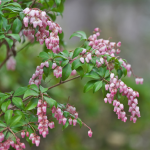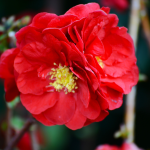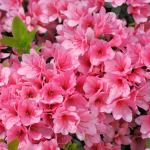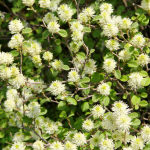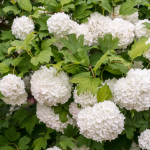Hydrangea 101- Choosing the Right Hydrangea
🌼 Meet the Hydrangeas
Discover the Different Types of Hydrangeas: A Guide to Choosing the Right One for Your Garden
Hydrangeas are among the most beloved flowering shrubs, offering large, showy blooms and lush foliage that bring color and beauty to any landscape. But not all hydrangeas are the same—there are several different types, each with unique characteristics, bloom styles, and care needs. Whether you’re new to gardening or an experienced plant lover, understanding the differences can help you choose the perfect hydrangea for your garden.
1. Bigleaf Hydrangeas (Hydrangea macrophylla)
Common Names: Mophead or Lacecap Hydrangeas
Best For: Foundation plantings, borders, and containers
Bloom Time: Early to mid-summer
Hardiness: Zones 5–9
Bigleaf hydrangeas are the most commonly recognized type. They have large, rounded “mophead” blooms or flatter, more delicate “lacecap” flowers. Their bloom color can shift depending on soil pH—acidic soil (pH below 6) produces blue blooms, while alkaline soil (pH above 7) turns flowers pink. Newer reblooming varieties like the Let’s Dance® series flower on both old and new wood, extending their bloom season.
Note: Bigleaf hydrangeas are sensitive to cold winters and may need winter protection in colder zones.
2. Smooth Hydrangeas (Hydrangea arborescens)
Common Varieties: ‘Annabelle’, Incrediball®, Invincibelle® Series
Best For: Woodland gardens, naturalized plantings, and mass plantings
Bloom Time: Early to late summer
Hardiness: Zones 3–9
Smooth hydrangeas are native to North America and are prized for their ability to thrive in a wide range of conditions. They bloom on new wood, making them reliable performers year after year—even after harsh winters. Their large, globe-like flowers are typically white or soft pink, although newer varieties are expanding the color palette.
Tip: These hydrangeas benefit from hard pruning in early spring to encourage larger blooms.
3. Panicle Hydrangeas (Hydrangea paniculata)
Common Varieties: Limelight, Pinky Winky®, Quick Fire®, Little Lime®
Best For: Sunny garden beds, hedges, and landscape focal points
Bloom Time: Mid to late summer through fall
Hardiness: Zones 3–8
Panicle hydrangeas are known for their upright, cone-shaped flower clusters and incredible cold hardiness. They are sun-lovers, tolerate pruning well, and bloom on new wood, making them extremely low-maintenance. Many varieties shift color over the season, turning from creamy white to shades of pink, red, or even burgundy.
Bonus: These are some of the best hydrangeas for full sun.
4. Oakleaf Hydrangeas (Hydrangea quercifolia)
Best For: Naturalistic landscapes, shady borders, and woodland gardens
Bloom Time: Early to midsummer
Hardiness: Zones 5–9
Named for their lobed, oak-like leaves, oakleaf hydrangeas offer four-season interest. In addition to beautiful white cone-shaped blooms, they boast spectacular fall foliage in shades of red, orange, and purple. The bark also peels attractively in winter. These native shrubs thrive in part shade and can handle drier soils better than other hydrangeas.
Did You Know? Oakleaf hydrangeas bloom on old wood, so prune only right after they flower.
5. Mountain Hydrangeas (Hydrangea serrata)
Best For: Small gardens, containers, and cooler climates
Bloom Time: Early to midsummer
Hardiness: Zones 5–9
Similar in appearance to bigleaf hydrangeas, mountain hydrangeas have smaller, more delicate flowers and a compact habit. They are better suited to cold climates than their bigleaf cousins. Many feature lacecap blooms and are ideal for woodland edges and shady spots.
New Cultivars: Look for the Tuff Stuff® series for reliable reblooming performance and excellent cold tolerance.
6. Climbing Hydrangeas (Hydrangea anomala subsp. petiolaris)
Best For: Walls, trellises, arbors, and shady vertical spaces
Bloom Time: Late spring to early summer
Hardiness: Zones 4–8
This unique hydrangea climbs by aerial rootlets, covering fences, walls, and structures with heart-shaped leaves and flat, lacecap-style white blooms. Climbing hydrangeas are slow to establish but well worth the wait—they become showstoppers with time and maturity.
Growth Note: Once established, they can grow up to 30–40 feet tall and are surprisingly tolerant of shade.
Choosing the Right Hydrangea for Your Garden
When selecting a hydrangea, consider:
-
Light conditions: Panicles love sun, while bigleaf and oakleaf types prefer partial shade.
-
Soil and moisture: Smooth and oakleaf types are more forgiving of drier conditions.
-
Winter cold: For tough winters, look for smooth, panicle, or mountain types that bloom on new wood.
-
Size and space: Bigleafs and mountains are compact, while panicles and oakleafs can become large shrubs.
Hydrangeas offer endless beauty and versatility for any garden. With a little planning, you can enjoy their blooms from late spring through fall—year after year.
Color Tips
Only Bigleaf & Mountain hydrangeas change color:
- Blue: Acidic soil (pH < 6) Amend soil with aluminum sulfate
- Pink: Alkaline soil (pH > 7) Amend soil with lime
Hydrangea paniculata flowers turn from white to pink simply as they age. This beautiful transformation is part of their charm and varies by variety, sun exposure, and season.
Factors That Influence the Intensity of the Pink:
- Sun Exposure: More sun = deeper pinks or reds.
- Cooler Nights in Fall: Boosts color change and intensifies hues.
Planting & Care Basics
✔️ Soil: Rich, well-draining, organic matter
✔️ Water: Deeply 1–2x per week—more in heat
✔️ Fertilizer: Spring + midsummer, slow-release Flower-Tone
✔️ Mulch: 2–3″ to conserve moisture & protect roots
✔️ Spacing: Allow room for airflow and mature size
Choosing the Right Hydrangea for YOU
Cottage garden or foundation bed? → Bigleaf or Smooth
Bigleaf (Hydrangea macrophylla)
- Classic choice with lush, romantic blooms in mophead or lacecap form.
- Perfect for morning sun and dappled afternoon shade.
- Add soil amendments to tweak bloom color (pink or blue!).
Smooth (Hydrangea arborescens)
- Native, cold-hardy, and reblooms reliably.
- Big, classic flowers that give that “old-fashioned” charm with modern toughness.
- Great for mixed borders and foundation beds.
For Hot Sunny Spots with All-Day Sun
Panicle (Hydrangea paniculata)
- The toughest and most sun-loving hydrangea!
- Upright, conical blooms that age beautifully from white to pink.
- Sturdy stems and drought tolerance make it great for open landscapes and sunny hedges.
For Shady Woodland Edges or Naturalized Areas
Oakleaf (Hydrangea quercifolia)
- Unique oak-like leaves that provide three-season interest: spring blooms, summer texture, and stunning fall color.
- Large white flower clusters fade to rose as they age.
- Loves partial to full shade—ideal under high trees or on woodland borders.
Climbing (Hydrangea petiolaris)
- Grows vertically with peeling bark and lacy white flowers.
- Beautiful on stone walls, arbors, or shady fences.
- Slow to establish but worth the wait
If You’re Chasing That Perfect Blue Flower
Bigleaf or Mountain Hydrangeas
- Only types that shift color based on soil pH.
- Acidic soil (pH < 6) = Blue blooms
- Alkaline soil (pH > 7) = Pink blooms
- Use aluminum sulfate to enhance blues or garden lime for pinks.






 contrast. Its compact size makes it a great choice for smaller gardens or urban settings.
contrast. Its compact size makes it a great choice for smaller gardens or urban settings.
 green, and gold, ensuring year-round appeal.
green, and gold, ensuring year-round appeal. purple foliage that matures into a rich green. Its upright growth habit and colorful appeal make it an excellent choice for a focal point in the garden.
purple foliage that matures into a rich green. Its upright growth habit and colorful appeal make it an excellent choice for a focal point in the garden.




